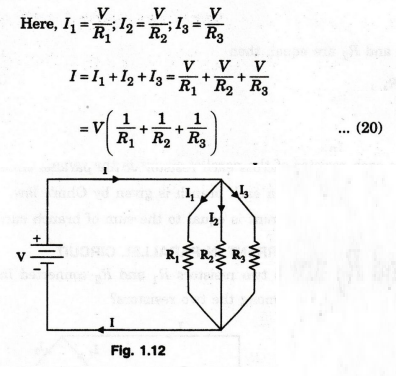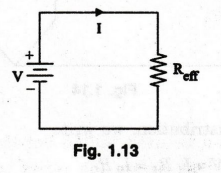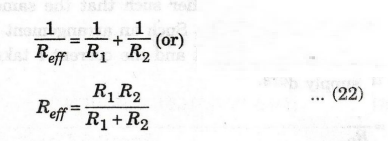Electric Circuit Analysis: Chapter - 1: Basic Circuit Analysis - DC
Resistors in Parallel
Electric Circuit Analysis
When resistors are connected across one another such that the same voltage is applied to each, then they are said to be in parallel.
RESISTORS IN PARALLEL
When
resistors are connected across one another such that the same voltage is
applied to each, then they are said to be in parallel. Such an arrangement is
shown in figure 1.12. The current in each resistor is different and the current
I taken from the supply divides among all the three resistors.

If we replace the three resistors in parallel by a single equivalent resistor R, as shown in figure 1.13, it will draw the same current, I as in the circuit of figure 1.12.

In
figure 1.13, V = IReff (by Ohm's law) …. (21)
Comparing
(20) and (21)
1/Reff
= 1/R1 + 1/R2 + 1/R3
If
there were only two resistors in parallel, then the effective resistance is
given by

If
the two resistors R1 and R2 are equal, then

In
a parallel circuit,
1.
The voltage across each resistor of the parallel circuit is the same.
2.
The current in each branch is given by Ohm's law.
3.
The total current is equal to the sum of branch currents.
Electric Circuit Analysis: Chapter - 1: Basic Circuit Analysis - DC : Tag: : Electric Circuit Analysis - Resistors in Parallel